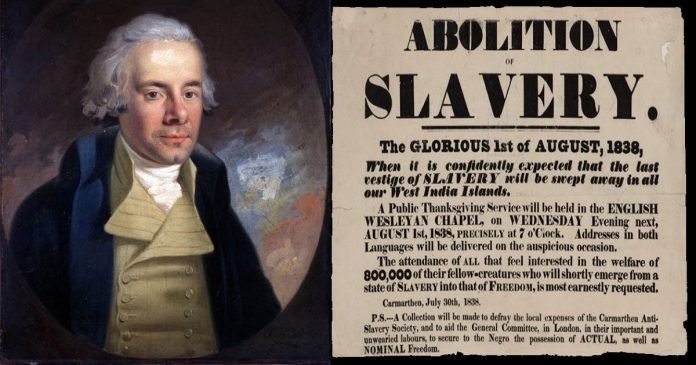By Jessica Brain
On 28th August 1833 a very important act received its Royal Assent. The Slavery Abolition Law would finally be enacted, after years of campaigning, suffering and injustice. This act was a crucial step in a much wider and ongoing process designed to bring an end to the slave trade.
Only a few decades previously, in 1807 another act had been passed which had made it illegal to purchase slaves directly from the African continent. Nevertheless, the practice of slavery remained widespread and legal in the British Caribbean.
The fight to end the slave trade was a long drawn out battle which brought to the surface a host of issues ranging from politics and economics to more social and cultural concerns.
The decision to bring the practice of slavery to an end was a contentious one. Britain had been engaged in slavery since the sixteenth century, with economic prosperity being secured through the use of slave-grown products such as sugar and cotton. The British Empire relied on cultivating products in order to trade in a global market: the use of slaves was paramount to this process.
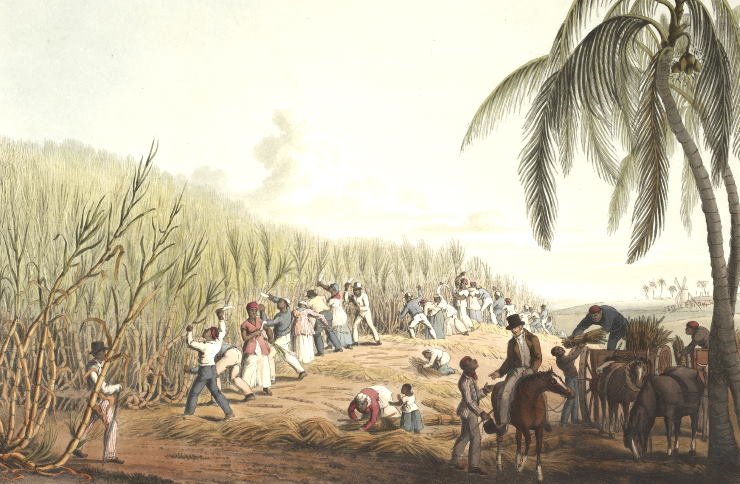
By the late 1700’s, times were changing, social norms were challenged and the stage for revolution in Europe was set. Concerns over equality, humanity and the rights of man gave way to individuals championing the cause of abolishing the antiquated and barbaric practice of slavery.
The campaign in Britain was led by significant Quaker anti-slavery groups who made public their concerns and brought it to the attention of politicians who were in a position to enact real change.
In May 1772 a significant court judgement by Lord Mansfield in the case of James Somerset, who was an enslaved African, versus Charles Stewart, a Customs Officer. In this case, the slave who had been purchased in Boston and then transported with Stewart to England had managed to escape. Unfortunately, he was later recaptured and subsequently imprisoned on a ship bound for Jamaica.
Somerset’s cause was taken up by three godparents, John Marlow, Thomas Walkin and Elizabeth Cade who made an application to the courts to determine whether there was a legitimate reason for his detention.
In May, Lord Mansfield gave his verdict ruling that slaves could not be transported from England against their will. The case therefore gave great impetus to those campaigners such as Granville Sharp who saw the ruling as an example for why slavery would be unsupported by English law.
Nevertheless, the ruling did not advocate abolition of slavery completely. Those backing Somerset argued that colonial laws which permitted slavery were not in conjunction with the common law of Parliament, thus making the practice unlawful. The case in question was still argued very much along legal lines rather than humanitarian or social concerns, however it would mark an important step in a trajectory of events which ultimately culminated in abolition.
The case had gained a great deal of attention amongst the public, so much so that by 1783 a strong anti-slavery movement was being formed. More individual cases such as that of a slave taken to Canada by American loyalists, sparked new legislation in 1793 against slavery, the first of its kind to take place in the British Empire.
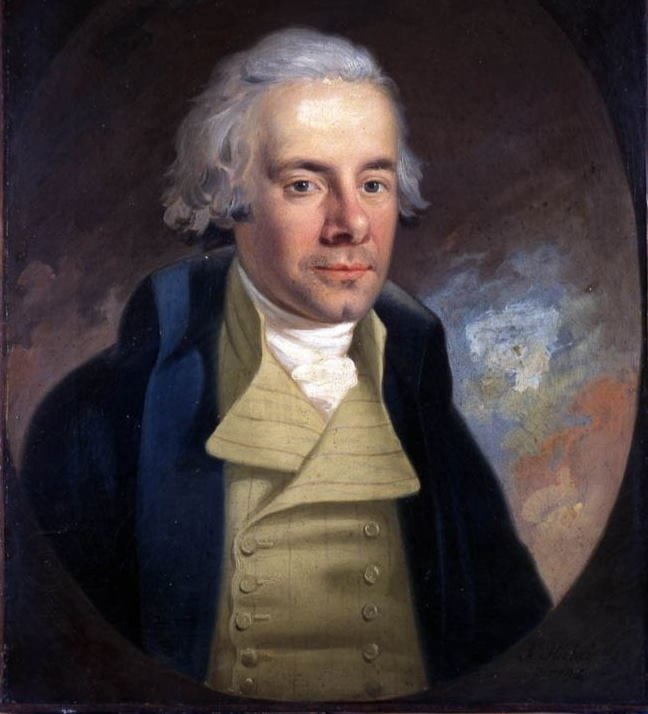
Back in Britain, the abolition of slavery was a cause championed by William Wilberforce, a Member of Parliament and philanthropist who was one of the most important and influential figures. He was soon joined by likeminded individuals who would bring the matter into the public sphere as well as the political sphere.
Other anti-slavery activists such as Hannah More and Granville Sharp were persuaded to join Wilberforce, which soon led to the foundation of the Anti-Slavery Society.
Key figures within the group included James Eliot, Zachary Macaulay and Henry Thornton who were referred to by many as the Saints and later, the Clapham Sect of which Wilberforce became the accepted leader.
On 13th March 1787 during a dinner involving several important figures amongst the Clapham Sect community, Wilberforce agreed to bring the issue to parliament.
Wilberforce would subsequently give many speeches in the House of Commons which included twelve motions condemning the slave trade. Whilst his cause described the appalling conditions experienced by slaves which were in direct opposition to his Christian beliefs, he did not advocate a total abolition of the trade. At this point, however, the biggest obstacle was not the ins and outs of the motion but parliament itself which continued to stall on the matter.
By 1807, with slavery garnering great public attention as well as in the courts, Parliament passed the Slave Trade Act. This was a momentous step, however it still was not the end goal as it simply outlawed the trade of slaves but not slavery itself.
Once enacted, the legislation worked through the imposition of fines which sadly did little to deter slave owners and traders who had great financial incentives in ensuring that the practice continued. With lucrative gains to be made, trafficking between Caribbean Islands would persist for several years. By 1811, a new law would help to curb this practice somewhat with the introduction of Slave Trade Felony Act which made slavery a felony.
The Royal Navy was also called in to assist in the implementation through the establishment of the West African Squadron which patrolled the coast. Between 1808 and 1860 it successfully freed 150,000 Africans bound for a life of enslavement. However, there was still a long way to go.
One often overlooked factor in bringing an end to the practice of the slave trade was the role played by those already enslaved. A growing resistance movement was developing amongst the slaves themselves, so much so that the French colony of St Domingue had been seized by the slaves themselves in a dramatic uprising leading to the establishment of Haiti.

Depiction of the Battle of Ravine-à-Couleuvres, 23rd February 1802, during the slave revolt in St Domingue (Haiti).
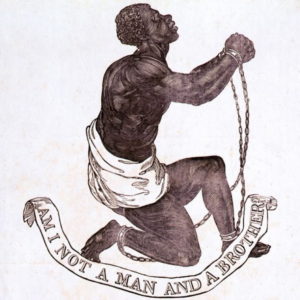
Meanwhile, the Anti-Slavery Society had its first meeting back in the UK which helped to bring together Quakers and Anglicans. As part of this group, a range of campaigns involving meetings, posters and speeches were arranged, helping to get the word out and draw attention to the issue. This would ultimately prove successful as it brought together a range of people who rallied behind the cause.
By 26th July 1833, the wheels were in motion for a new piece of legislation to be passed, however sadly William Wilberforce would die only three days later.
As part of the act, slavery was abolished in most British colonies which resulted in around 800,000 slaves being freed in the Caribbean as well as South Africa and a small amount in Canada. The law took effect on 1st August 1834 and put into practice a transitional phase which included reassigning roles of slaves as “apprentices” which was later brought to an end in 1840.
Sadly, in practical terms the act did not seek to include territories “in the possession of the East India Company, or Ceylon, or Saint Helena”. By 1843 these conditions were lifted. A longer process however ensued which not only included freeing slaves but also finding a way to compensate the slave owners for loss of investment.
The British government sought around £20 million to pay for the loss of slaves, many of those in receipt of this compensation were from the higher echelons of society.
Meanwhile whilst the apprenticeships were enforced, peaceful protests by those affected would continue until their freedom was secured. By 1st August 1838 this was finally achieved with full legal emancipation granted.

The abolition of slavery in the British Empire thus brought in a new era of change in politics, economics and society. The movement towards abolition had been an arduous journey and in the end many factors played a significant role in ending the slave trade.
Key individuals both in Britain and overseas, parliamentary figures, enslaved communities, religious figures and people who felt the cause was worth fighting for all helped to bring about a seismic shift in social awareness and conscience.
Thus, the trajectory of events leading to the abolition of slavery remain a significant chapter in British and global history, with important lessons for humanity as a whole.
Jessica Brain is a freelance writer specialising in history. Based in Kent and a lover of all things historical.
Slavery and abolition in the British Empire

The British played an integral role in building the Atlantic slave trade, which enabled chattel slavery, the brutal practice that defined most societies in the Atlantic world.
“Portugal and Britain were the two most ‘successful’ slave-trading countries accounting for about 70% of all Africans transported to the Americas. Britain was the most dominant between 1640 and 1807 when the British slave trade was abolished,” the British National Archives found.
In total, about 3.1 million African people were transported to British colonies across the Americas and Caribbean, though only 2.7 million people survived the harrowing “middle passage” in the confines of slave ships across the ocean.
History’s lens can give a kaleidoscope view. There are many more facets involved in the history of the slave trade.
In 1791 the French colony of St Domingue was the richest sugar island in the Caribbean. A slave army led by Toussaint L’Ouverture burned the plantations, defeating both militias and French troops. The emergence of an independent republic, under black leadership, sent shock waves across the Atlantic to Britain.
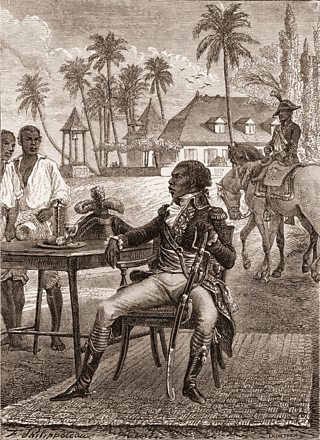
In 1793 Britain took the chance to take St Domingue from the Haitian leader L’Ouverture. However, Britain suffered humiliation and was beaten by disease and the ex-slave army.
Despite this failed invasion, the British continually attempted to defeat the slave army and capture the island’s resources. The government hoped this would stop rebellion spreading to neighbouring British colonies.
45,000 British soldiers died in battle and from disease in the West Indies between 1793 and 1801.
In Britain there was fear that rebellion would spread to other islands. The pro-slavery lobby blamed the abolition campaign for provoking the rebellion and for the resulting death and disorder.
Attitudes in Parliament became hardened towards the protection of property and against abolition. In public opinion, the abolition campaign became linked to the reported ‘murder and mayhem’
But at the same time concerns were raised about the long term viability of slavery. The financial and human cost had soared out of control in a short space of time.
Although the position of plantation owners and slave traders remained fixed, support for slavery amongst other Parliamentarians declined over the long term.
Far too much credit for the abolition of slavery is given to William Wilberforce, one of history’s biggest hypocrites and reactionaries.
During the 18th century, Britain became the slave carrier for the sugar planters of France and Spain, her rivals. The sugar colonies were far more important to France than to Britain. St Domingue (present-day Haiti), controlled by the French, was more fertile than the British West Indies (which included Jamaica), where the soil was becoming exhausted. The sugar from St. Domingue cost a fifth less and its exports and profit rates were twice that of Jamaica. By 1789, its sugar production was a third more than that of all Britain’s West Indies colonies.
Prime Minister William Pitt raged that the slave trade, “instead of being very advantageous to Great Britain, is the most destructive that can well be imagined to her interests.” To ruin St Domingue, he urged his friend William Wilberforce to campaign against the slave trade: the abolitionist movement was created to serve British state interests.
The British ruling class’s frenzied reaction to the French revolution of 1789 intensified the antagonism with France, as she became not just a rival but also a political alternative. In 1791, St Domingue’s slave-owners offered to leave French rule and put themselves under British rule, to keep their slaves. In 1793, Pitt accepted their offer and agreed, blocking abolition for the next 14 years.
When St Domingue’s slaves rebelled against Pitt’s betrayal, he sent hundreds of thousands of troops to try to crush them, in a disastrous and futile war. 50,000 British soldiers died, 50,000 were permanently invalided. When St Domingue’s revolutionary government ended slavery and declared independence from France in 1804, the British ruling class did not need the slave trade any more and so could abolish it in 1807.
Reactionary in Britain
In Britain, Wilberforce was the foremost apologist and champion of every act of tyranny, from the employment of Oliver the Spy and the illegal detention of poor prisoners in Coldbaths Fields jail to the Peterloo massacre. Wilberforce supported the 1794 Habeas Corpus Suspension Act, which let the government imprison people against whom it had no evidence at all. Habeas Corpus was suspended until 1802. Across Britain, trade union members, journalists and publishers were arrested and detained.
Wilberforce backed a series of Acts between 1795 and 1799 to suppress sedition, used to curb freedom of speech, assembly and organisation. Consequently, the state prevented meetings of the Literary Society of Manchester, the Academical Society of Oxford, and even of a mineralogical society, on the grounds that the study of mineralogy could lead to atheism. He backed the Tory government’s Six Acts of 1819, including the Blasphemous and Seditious Libel Act, known as the Gagging Act.
In 1794 he backed the prosecution of twelve members of the London Corresponding Society for high treason. Their crime was to advocate universal suffrage. When a jury acquitted the defendants, he backed the government’s decision to arrest 65 leading members of the society and imprison them without trial for two years. No wonder that it was said of Wilberforce, “he never favoured the liberty of any white man in all his life.”
Wilberforce wrote that Christianity “renders the inequalities of the social scale less galling to the lower orders, whom also she instructs in their turn to be diligent, humble, patient: reminding them that their more lowly path has been allotted to them by the hand of God; that it is their part faithfully to discharge its duties, and contentedly to bear its inconveniences.” William Cobbett called him the prince of hypocrites, who praised the benefits of poverty from a comfortable distance.
The bishops and baronets of the Proclamation Society (as Wilberforce’s Society for the Suppression of Vice was earlier called) prosecuted the impoverished publisher of Tom Paine’s The Age of Reason. In 1801 and 1802, it launched 623 successful prosecutions for breaking the Sabbath laws. Pitt’s government declared The Rights of Man seditious and prosecuted those who published and sold copies of Paine’s book.
Censorship
The government, with Wilberforce’s support, imposed censorship, launching 42 prosecutions of publishers, editors and writers between 1809 and 1812. It became a criminal offence to write that the Prince of Wales was fat (he was), or to report that Foreign Secretary Lord Castlereagh had ordered the flogging of Irish peasants (he had).
Wilberforce also backed persecution of the whole working class. He proposed a general Combination Act, calling combinations – trade unions – “a general disease in our society”. The Pitt government’s acts of 1799 and 1800 were the severest of their kind ever enacted in Britain. They made all unions illegal as such, whether conspiracy, restraint of trade or the like could be proved against them or not.
In theory, the acts applied to employers as well as to workers, but workers were prosecuted by the thousand, never a single employer. In 1834, a year after the emancipation of the slaves, the penalty for trade union activity was still transportation for life.
In sum, as his biographer the last Lord Birkenhead wrote approvingly, Wilberforce “was a Tory through and through; he never shed the political ideas he had inherited from Pitt and his religion intensified his conservatism.”
Slave Compensation Act 1837
Slave Compensation Act 1837 and London Society of West India Planters and Merchants
The Slave Compensation Act 1837 (1 & 2 Vict. c. 3) was the world’s first major act of compensated emancipation and an Act of Parliament in the United Kingdom, signed into law on 23 December 1837. It authorised the Commissioners for the Reduction of the National Debt to compensate slave owners in the British colonies of the Caribbean, Mauritius, and the Cape of Good Hope in the amount of approximately £20 million for freed slaves. Based on a government census of 1 August 1834, over 40,000 awards to slave owners were issued. Since some of the payments were converted into 3.5% government annuities, they lasted until 2015.
The Act provided for payments to slave-owners. No slaves or their decendents were ever compansated. The amount of money to be spent on the payments was set at “the Sum of Twenty Million Pounds Sterling”. Under the terms of the Act, the British government raised £20 million to pay out for the loss of the slaves as business assets to the registered owners of the freed slaves. In 1833, £20 million amounted to 40% of the Treasury’s annual income or approximately 5% of British GDP at the time.
To finance the payments, the British government took on a £15 million loan, finalised on 3 August 1835, with banker Nathan Mayer Rothschild and his brother-in-law Moses Montefiore; £5 million was paid out directly in government stock, worth £1.5 billion in this present day. The money was not paid back by the British taxpayers until 2015, when the British Government decided to modernise the gilt portfolio by redeeming all remaining undated gilts. The long gap between this money being borrowed and its repayment was due to the type of financial instrument that was used, rather than the amount of money borrowed.
Half of the money went to slave-owning families in the Caribbean and Africa, while the other half went to absentee owners living in Britain. The names listed in the returns for slave owner payments show that ownership was spread over many hundreds of British families, many of them (though not all) of high social standing. For example, Henry Phillpotts (then the Bishop of Exeter), with three others (as trustees and executors of the will of John Ward, 1st Earl of Dudley), was paid £12,700 for 665 slaves in the West Indies, whilst Henry Lascelles, 2nd Earl of Harewood received £26,309 for 2,554 slaves on 6 plantations.
The majority of men and women who were paid under the 1833 Abolition Act are listed in a Parliamentary Return, entitled Slavery Abolition Act, which is an account of all moneys awarded by the Commissioners of Slave Compensation in the Parliamentary Papers 1837–8 (215) vol. 48.
Compensating slave owners after abolition
While the British government hasn’t disclosed a complete list of the recipient individuals and firms of bonds related to compensation for slaves, researchers at University College London have compiled a list of over 46,000 current individuals and groups who have received government payouts related to the abolition of slavery. Many powerful British families, including current business and political elites in the United Kingdom, are among the recipients uncovered by the UCL team.
Yet not all recipients were already wealthy or became so due to the payouts; UCL records show many middle-class Britons also benefited from the bonds.
“Britain stood out among European states in its willingness to appease slave owners, and to burden future generations of its citizens with the responsibility of paying for it,” Kris Manjapra wrote for The Guardian in 2018.
British taxpayers would never have discovered they’d completed these loan repayments in 2015 if someone in the British Government’s Treasury Department hadn’t posted this on its official Twitter channel to its hundreds of thousands of followers:

The tweet was subsequently deleted, but not before this insult, and the secret was out, which David Olusoga writes about here. Here’s one of the responses to that Treasury tweet he includes:
So basically, my father and his children and grandchildren have been paying taxes to compensate those who enslaved our ancestors, and you want me to be proud of that fact. Are you f**king insane???”
As Olusoga writes:
“The Treasury’s tweet shows slavery is still misunderstood”.
Soooo misunderstood!
There is so much painful history to face up to, and the process is only just beginning. The University of Glasgow has shown leadership in this area by conducting a kind of ‘slavery money audit’ and announcing long-overdue ‘reparative justice’ measures:
Today we publish a report following a year long investigation into our links to historical slavery. And also launch a programme of reparative justice. Read the findings here ➡️https://t.co/LSy0PcMafc
— University of Glasgow (@UofGlasgow) September 16, 2018
The UK Treasury continued to compensate the descendants of slave owners for decades after the abolition of slavery in the empire. The payments were not scrutinized until the British Treasury tweeted out the historical fact in 2018.
“The amount of money borrowed for the Slavery Abolition Act was so large that it wasn’t paid off until 2015. Which means that living British citizens helped pay to end the slave trade,” the tweet read.
The tweet was widely criticized at the time, with many outraged that current British tax dollars were compensating the descendants of slave owners. The Treasury later deleted the tweet.
David Olusoga details some of the big names that benefited from this compensation and remain part of the British elite, including former British Prime Minster David Cameron’s family.
Incredible research and information on the compensation paid to slave owners, as well as the big companies, art collections and institutions that can trace their existence back to slavery, is freely available on University College London’s Legacies of British Slave-Ownership project website.
Other institutions must follow Glasgow University’s slavery money audit example.
A nation that doesn’t understand its own history and the roots of its wealth will struggle to understand how power, finance, politics and economies work. A nation that doesn’t understand its past can’t understand its present, and how the legacy of slavery and empire remain at the heart of British life today. Some of our families were enriched by it, and some of our families were impoverished and brutalised by it. It is alive in almost every aspect of modern British life you care to name.
Support Independent Journalism Today
Our unwavering dedication is to provide you with unbiased news, diverse perspectives, and insightful opinions. We're on a mission to ensure that those in positions of power are held accountable for their actions, but we can't do it alone. Labour Heartlands is primarily funded by me, Paul Knaggs, and by the generous contributions of readers like you. Your donations keep us going and help us uphold the principles of independent journalism. Join us in our quest for truth, transparency, and accountability – donate today and be a part of our mission!
Like everyone else, we're facing challenges, and we need your help to stay online and continue providing crucial journalism. Every contribution, no matter how small, goes a long way in helping us thrive. By becoming one of our donors, you become a vital part of our mission to uncover the truth and uphold the values of democracy.
While we maintain our independence from political affiliations, we stand united against corruption, injustice, and the erosion of free speech, truth, and democracy. We believe in the power of accurate information in a democracy, and we consider facts non-negotiable.
Your support, no matter the amount, can make a significant impact. Together, we can make a difference and continue our journey toward a more informed and just society.
Thank you for supporting Labour Heartlands
